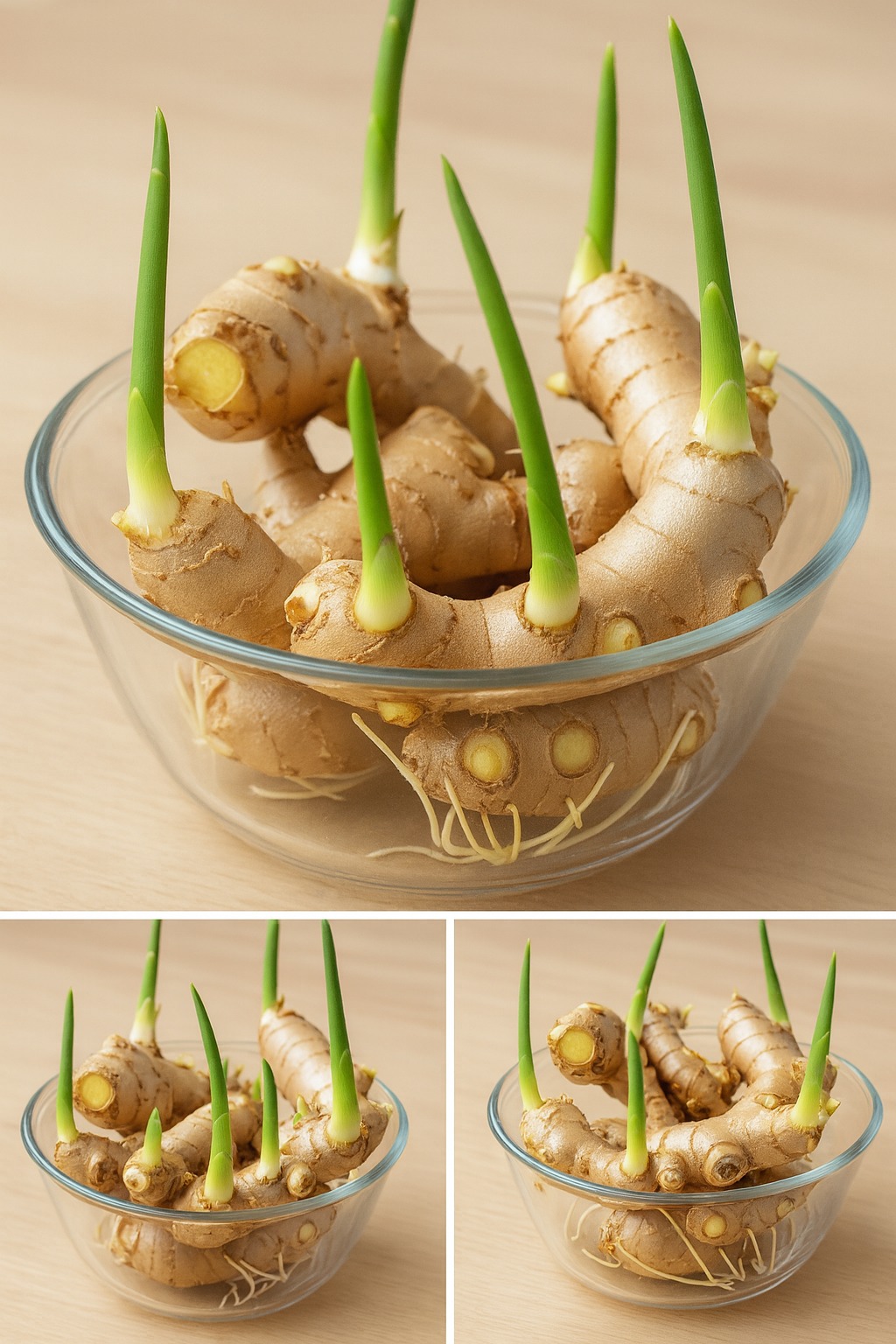- Let the cut pieces dry for 1–2 days to prevent rot before planting.
Planting the Ginger
-
- Fill the container with soil, leaving about 2 inches from the top.
- Place the ginger rhizome horizontally, with the buds facing upward.
- Cover it with 1–2 inches of soil, but do not bury it too deep.
- Water lightly to moisten the soil.
Step 4: Providing Proper Care
Light Requirements
Ginger grows best in indirect sunlight or partial shade. Avoid direct harsh sunlight, as it can dry out the soil.
Temperature and Humidity
- Ginger prefers warm temperatures between 75–85°F (24–29°C).
- Maintain humidity by misting the plant or placing a tray of water nearby.
Watering
-
- Keep the soil consistently moist but not soggy.
- Water 2–3 times a week, adjusting based on climate conditions.
- Reduce watering slightly during the cooler months.
Fertilizing
-
- Use a balanced organic fertilizer or compost tea every 3–4 weeks.
- Avoid high-nitrogen fertilizers, as they encourage leafy growth rather than rhizome development.
Step 5: Harvesting Ginger
Ginger is ready for harvest in 8–10 months after planting, but you can also harvest baby ginger as early as 4–5 months.
How to Harvest Ginger
-
- Gently dig around the plant and remove a section of the rhizome while leaving the rest to continue growing.
- If harvesting the entire plant, pull it up and separate the rhizomes.
- Wash off excess soil and allow the ginger to cure for a few days before use.
Step 6: Ensuring a Continuous Supply of Ginger
To ensure you NEVER run out of ginger, follow these tips:
-
- Regrow from harvested pieces – Save a few sections of rhizomes to plant again.
- Use staggered planting – Plant ginger in different pots every 2–3 months for a continuous harvest.
- Propagate indoors during winter – Keep ginger in pots inside to maintain year-round growth.
Troubleshooting Common Ginger Growing Problems
1. Ginger is Not Sprouting
Possible causes:
-
- The rhizome is too dry or old.
- The soil is too wet, causing rot.
- Temperatures are too low.
Solution: Keep the soil moist but not soggy, ensure warmth, and be patient—it may take 3–6 weeks to sprout.
2. Yellowing Leaves
Possible causes:
-
- Overwatering or underwatering.
- Poor soil drainage.
- Nutrient deficiency.
Solution: Adjust watering habits, ensure proper drainage, and feed with organic compost or fertilizer.
3. Mold or Fungus on Soil
Possible causes:
-
- Excessive moisture.
- Poor air circulation.
Solution: Improve ventilation, reduce watering, and sprinkle cinnamon or neem powder on the soil to prevent fungus.
Creative Ways to Use Homegrown Ginger
Now that you have a steady supply of fresh ginger, here are some ways to enjoy it:
-
- Cooking: Add to stir-fries, soups, curries, and teas.
- Health Remedies: Make ginger tea for digestion and colds.
- Preservation: Freeze or dry ginger for long-term use.
- Beauty Treatments: Use ginger-infused oil for hair and skin care.
Final Thoughts
Growing ginger at home is a rewarding experience that ensures your family always has a fresh supply of this beneficial spice. With minimal effort, you can cultivate ginger in containers, harvest it as needed, and enjoy its incredible flavor and health benefits year-round. Start growing today, and you’ll never have to buy ginger from the store again!

